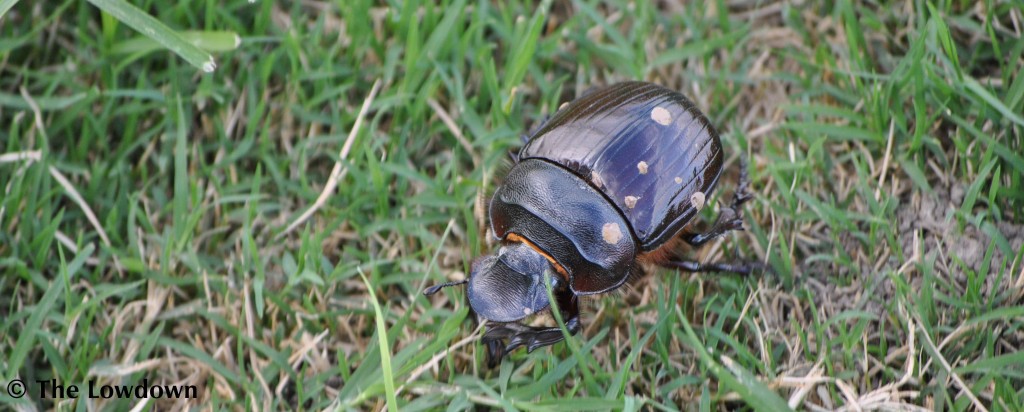There are thousands of species of dung beetles, of which some 1,800 are found in Southern Africa alone. Overall they occur throughout most of Africa and Madagascar. They come in a variety of colours and sizes – bronze, green, black and so on. They have a wide thorax, short clubbed antennae with a wide head. The fan like antennae can be folded neatly away, in particular when the beetle is engaged in the laborious task of preparing its meal. Dung beetles are widespread in most habitats, favouring woodland and savannah grasslands where the majority of the herbivores, whose dung they feed on, reside.
Adult dung beetles fly over the grasslands and through the woodlands singly or in groups to sites of recent mammal droppings. On reaching the site, the beetle will firstly break up the pile of dung, using its front legs. The best part of the dung is patted and pressed into a neat ball, and the beetle also uses its shovel like head to aid it in making the neat round ball of dung.
Having made its dung ball, the ball is either rolled away by the beetle using its hind legs to a nearby chamber which it has excavated or it will bury the ball there and then on site. When it buries the ball in a chamber, it seals the entrance of the tunnel; it then steadily eats the whole ball taking several days to do so, whereupon it will break out and fly out in search of fresh dung.
Both sexes look alike. After mating the female carves out a chunk of dung and then rolls it away into a hastily built underground tunnel. She deposits a number of balls in the tunnel; in each ball a single egg is laid. Beetles have a four stage history- egg, larva, pupa and then adult. Out of the egg hatches a white larva, which eats the contents on the ball leaving only a thin outer sheet. It pupates then emerges as an adult usually when the rains are just beginning.
The larvae of the dung beetle are fed upon by many other creatures that will dig them out of their dung balls. It needs to be appreciated just how vital dung beetles are in the process of recycling nutrients back into the soil from the dung they bury and eat. This is particularly so in arid regions, where bacterial and fungi decay is retarded due to dryness. Though they appear as being repulsive because they “boldly go” into an area where no other creatures dare tread – that of handling and feeding on the waste matter of other creatures, dung or excreta.
Thanks to these humble beetles, the land does not smell and choke up with unsightly piles of discarded mammalian dung. Be it human or animal the dung beetle tackles it all. From a human point of view we may snub the dung beetles and call them low-lifes yet their roll in nature surpasses that of other more appealing charismatic creatures.


Leave a Reply
You must be logged in to post a comment.